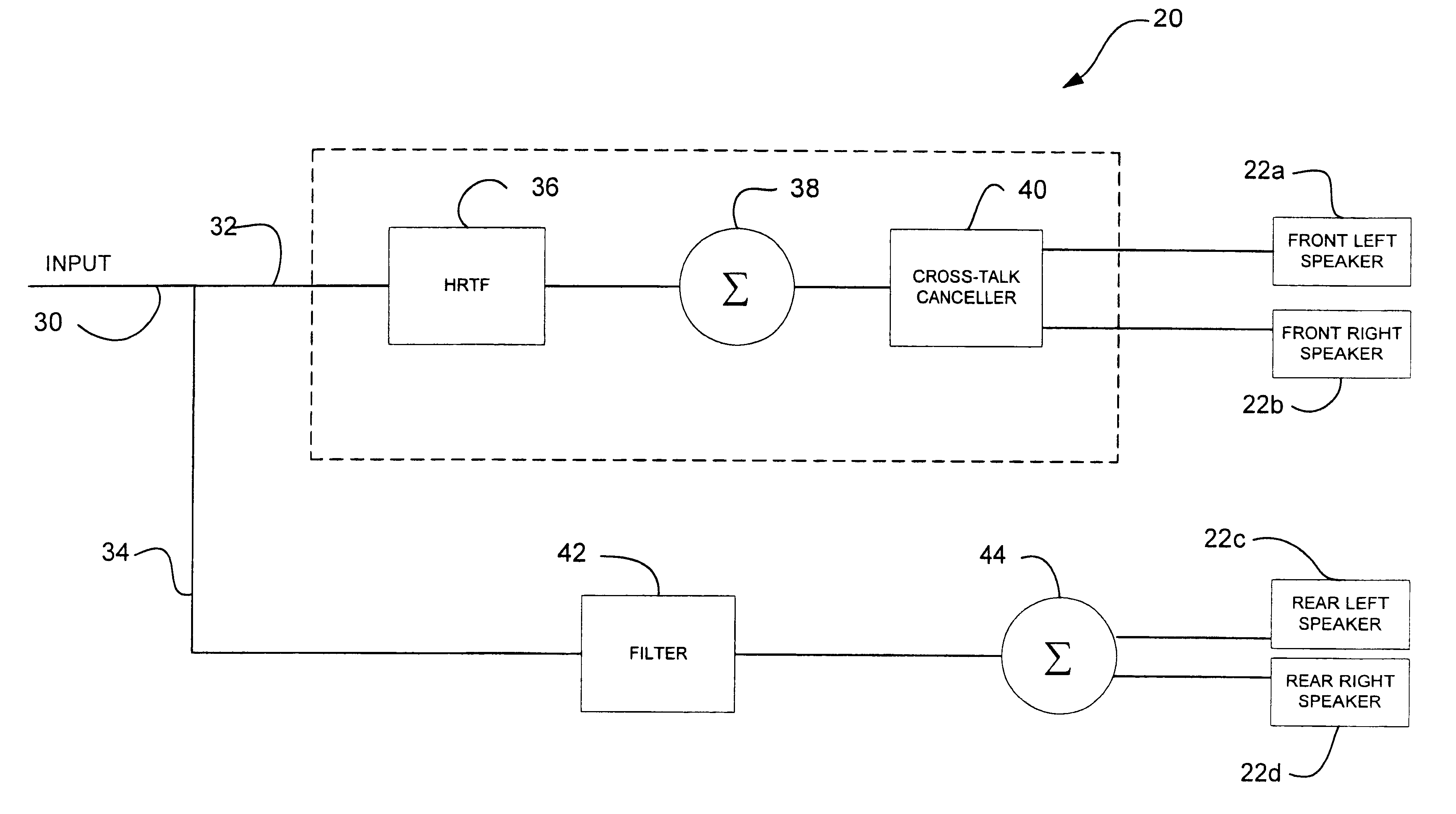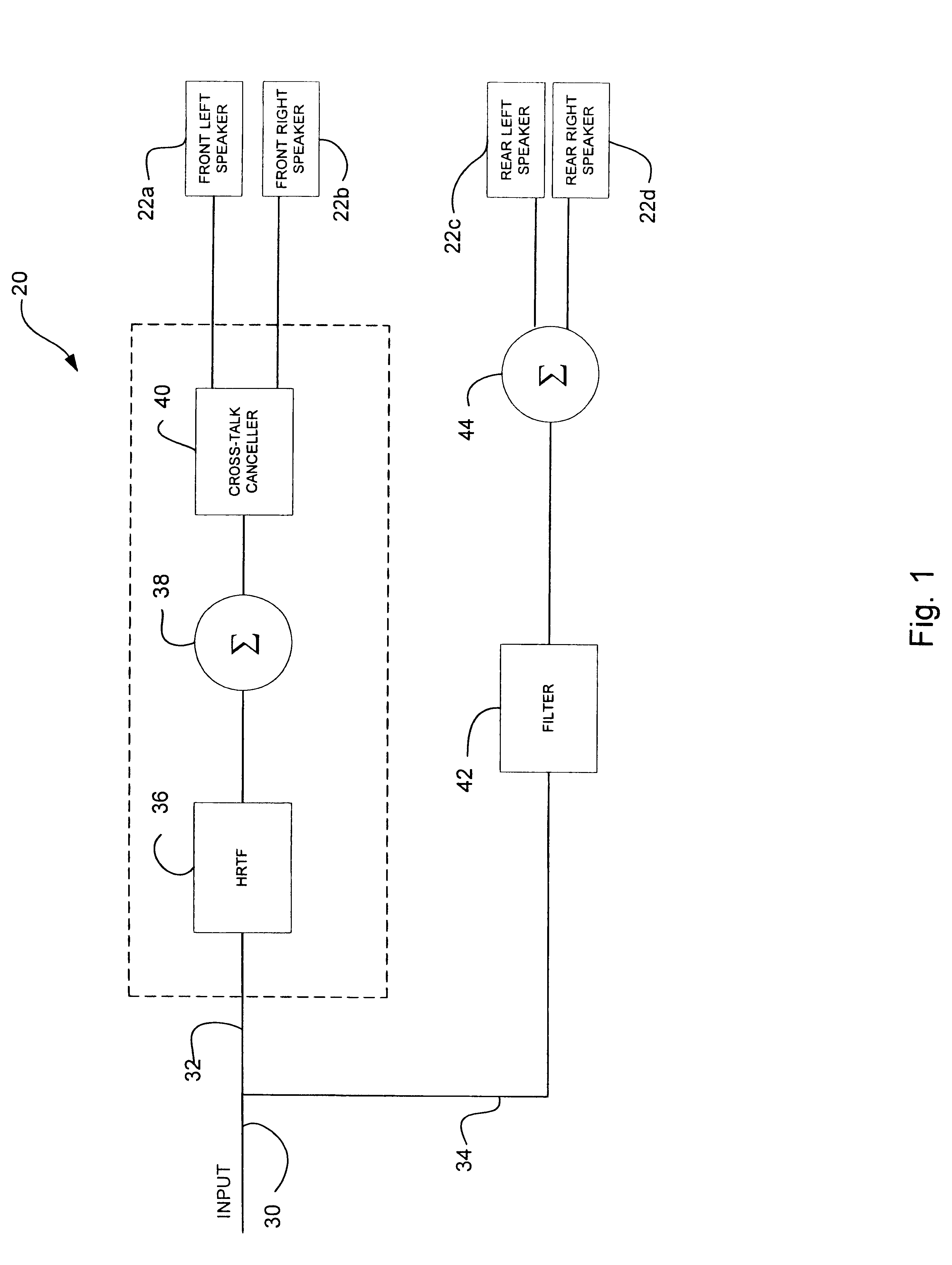Positional audio rendering
a positional audio and audio technology, applied in the field of acoustic modeling, can solve the problems of not always convenient to wear headphones or earphones, and the problem of not always delivering the audio signal directly to the listener's ear,
- Summary
- Abstract
- Description
- Claims
- Application Information
AI Technical Summary
Problems solved by technology
Method used
Image
Examples
Embodiment Construction
Referring now to the drawings, and first to FIG. 1, an audio rendering system is generally indicated at 20. The audio rendering system includes three or more speakers positioned generally surrounding a listener L, as shown in FIGS. 2 and 3. The speakers are positioned so that a left side speaker 22a and right side speaker 22b are located in front of a listener, and either a left speaker 22c and right speaker 22d are located behind the listener (FIG. 2), or one speaker 22e is located behind the listener (FIG. 3). The rear speakers are provided to reduce positional ambiguity due to model-mismatch in the reception of three-dimensional audio over the front speakers while still retaining the full three-dimensional positional cues provided by HRTF processing. The sound provided from the rear speakers reduces or eliminates frontward bias which is present in conventional two speakers system. As further described below, front and rear gains are adjusted as the source location is changed to p...
PUM
 Login to View More
Login to View More Abstract
Description
Claims
Application Information
 Login to View More
Login to View More - R&D
- Intellectual Property
- Life Sciences
- Materials
- Tech Scout
- Unparalleled Data Quality
- Higher Quality Content
- 60% Fewer Hallucinations
Browse by: Latest US Patents, China's latest patents, Technical Efficacy Thesaurus, Application Domain, Technology Topic, Popular Technical Reports.
© 2025 PatSnap. All rights reserved.Legal|Privacy policy|Modern Slavery Act Transparency Statement|Sitemap|About US| Contact US: help@patsnap.com



